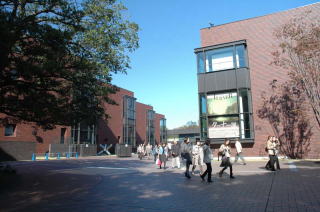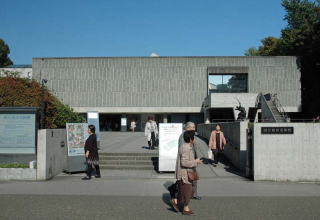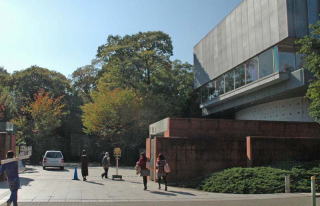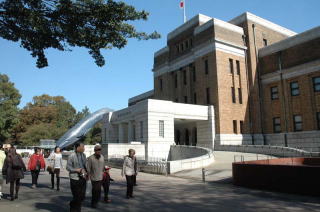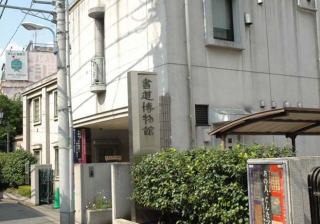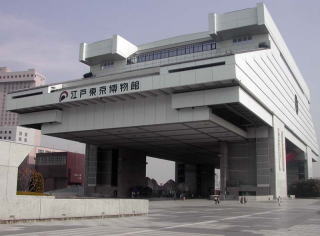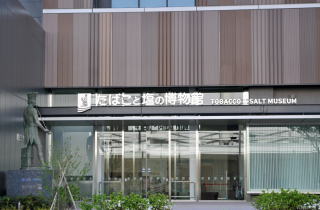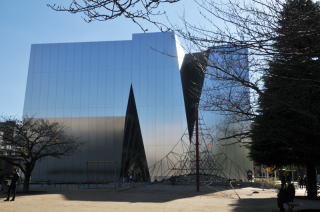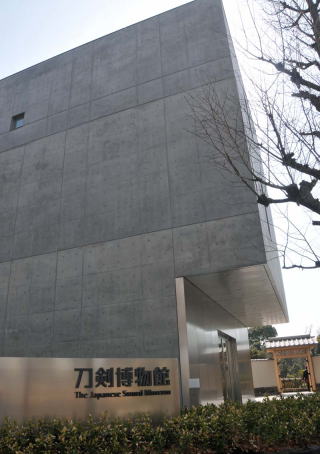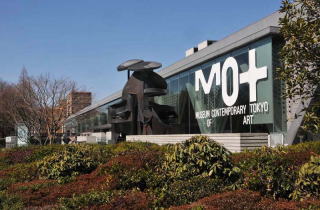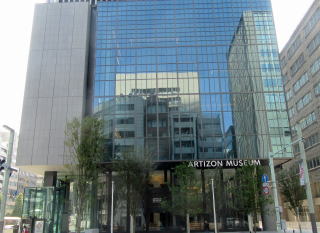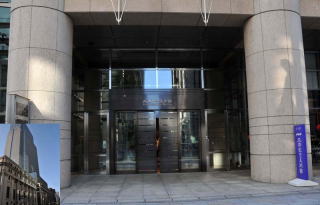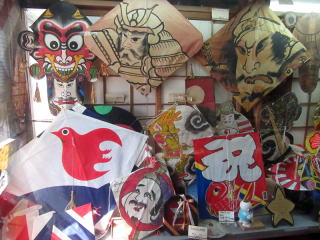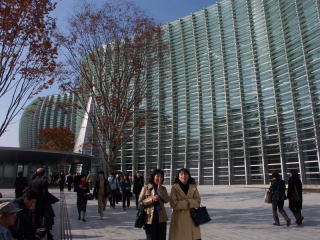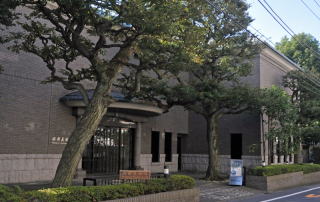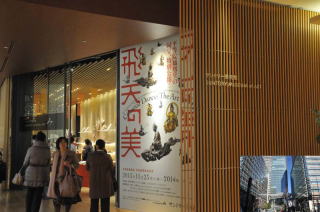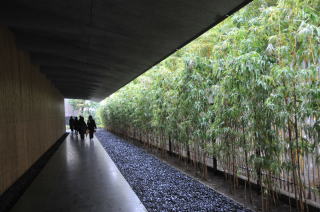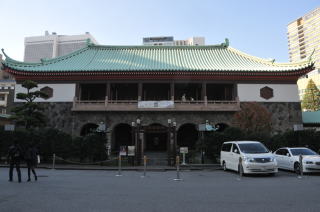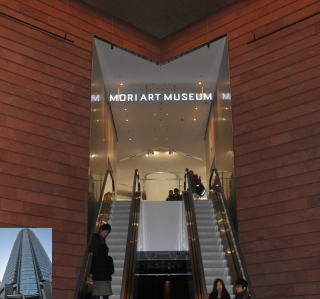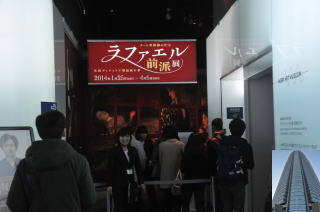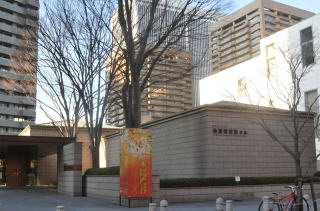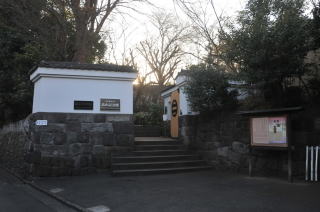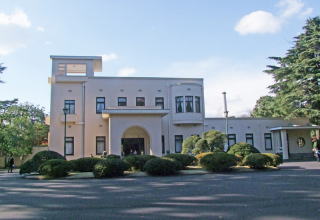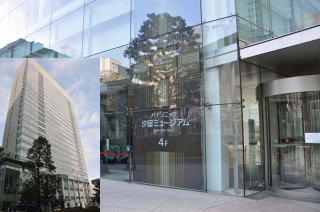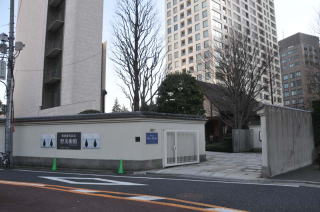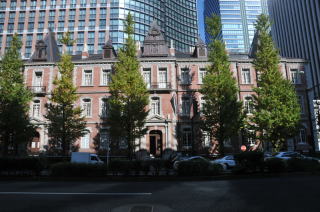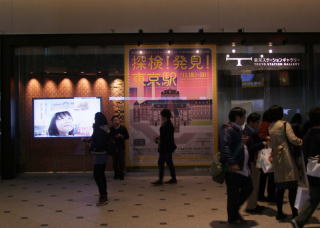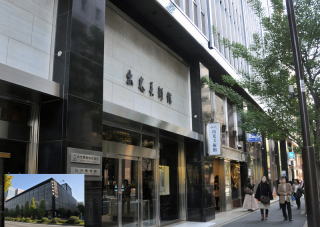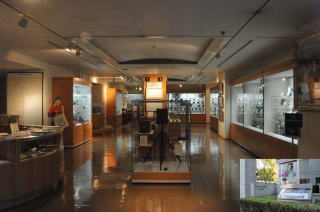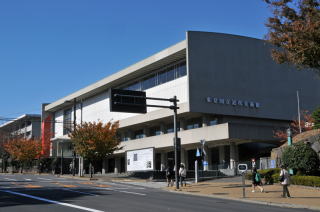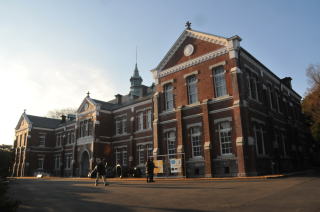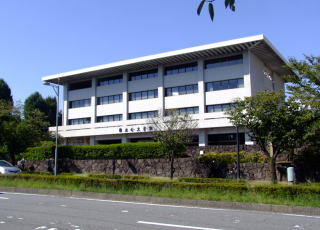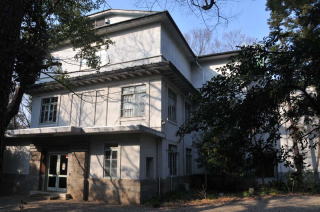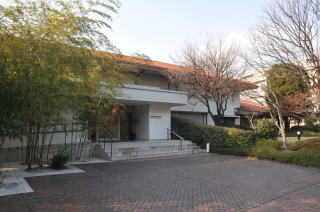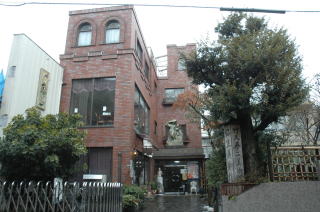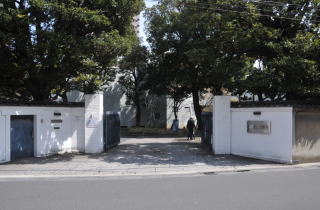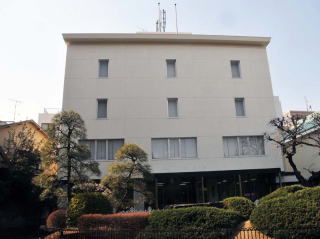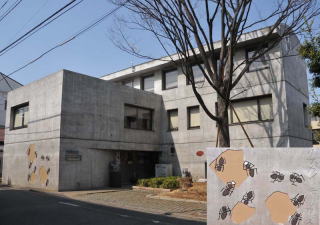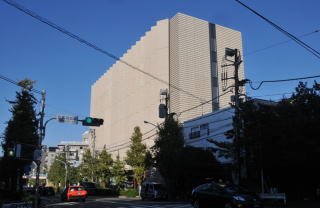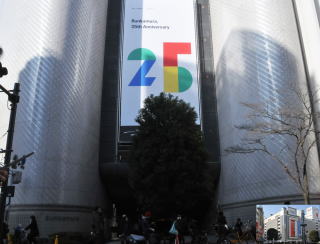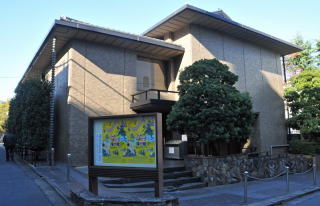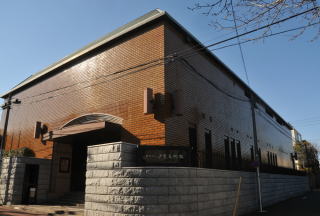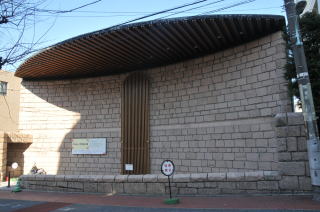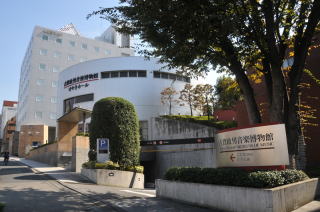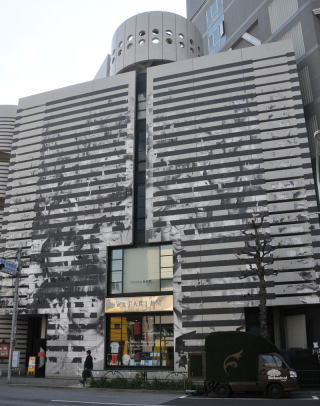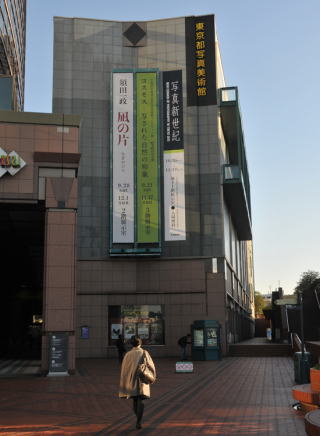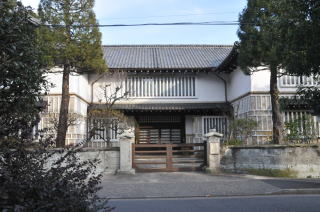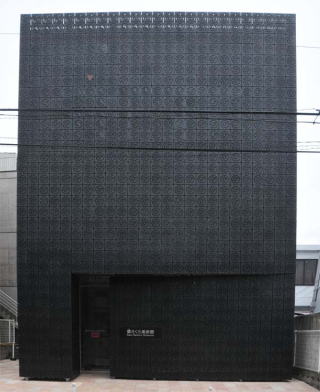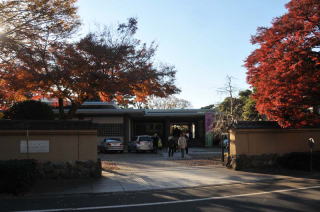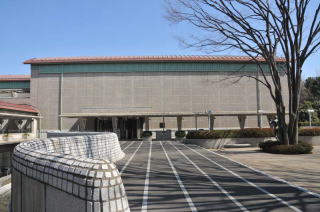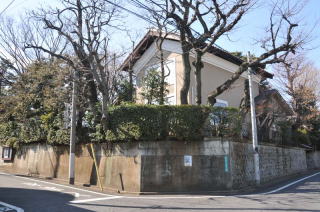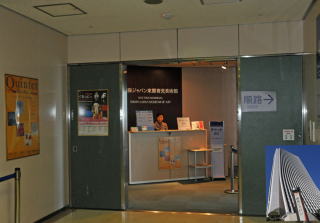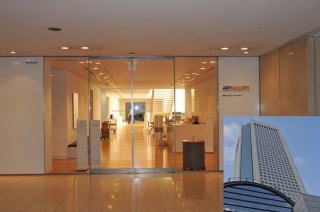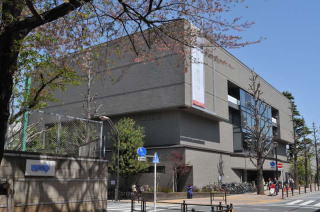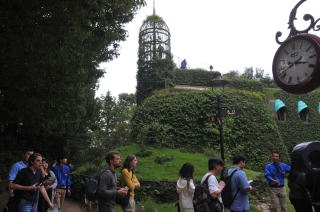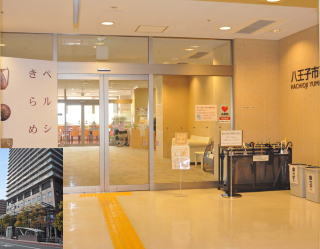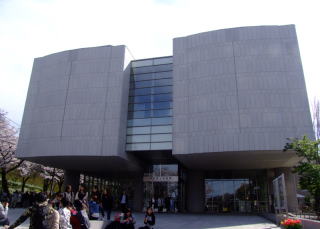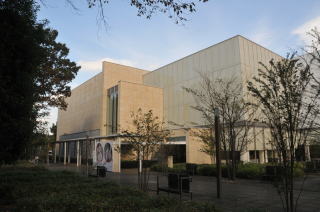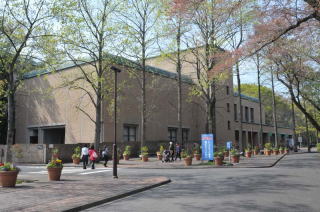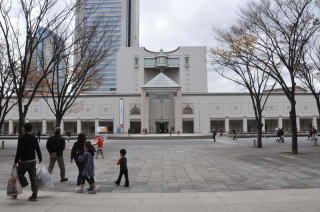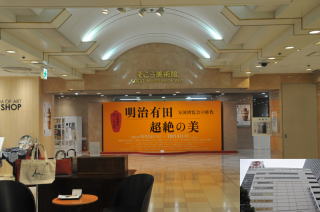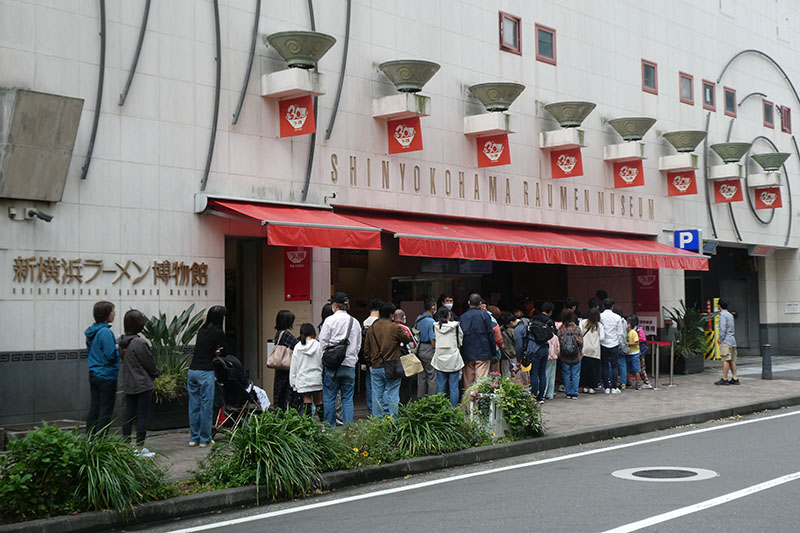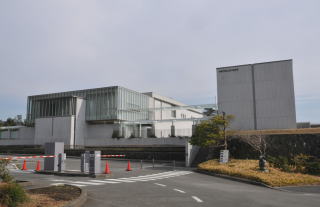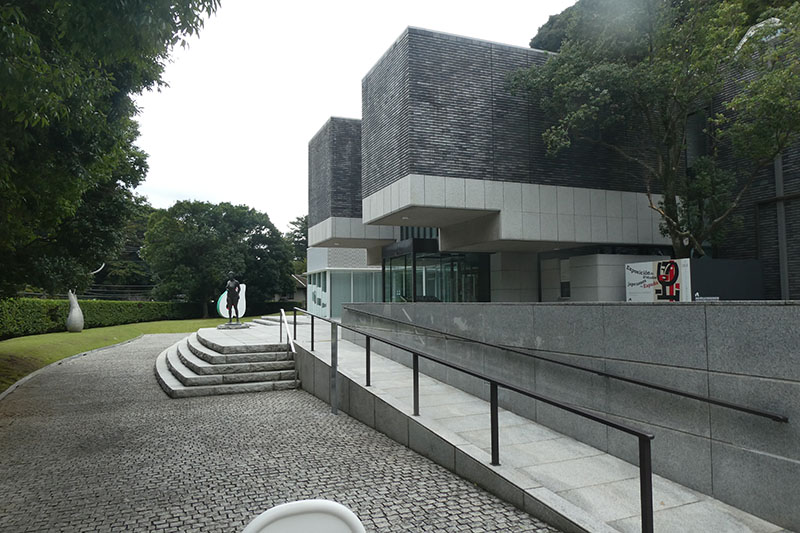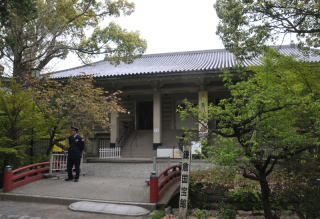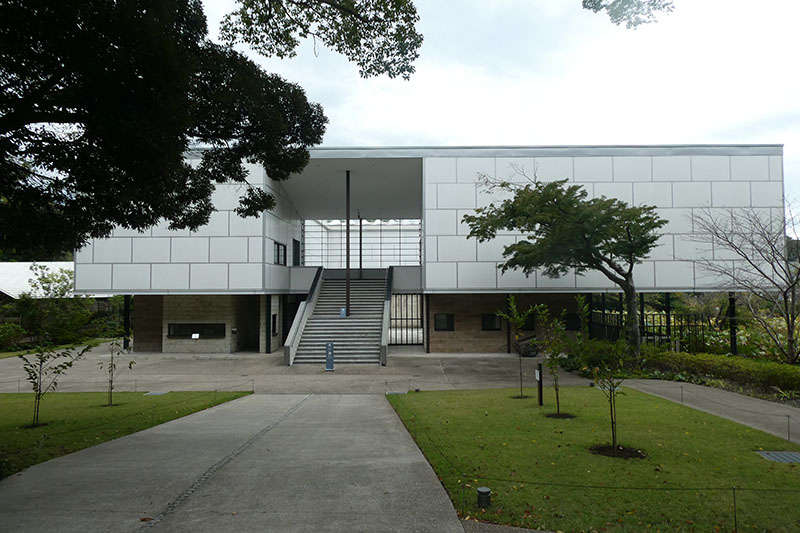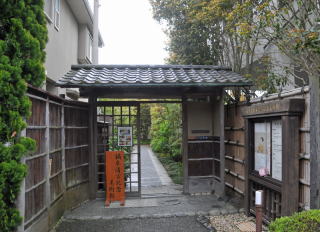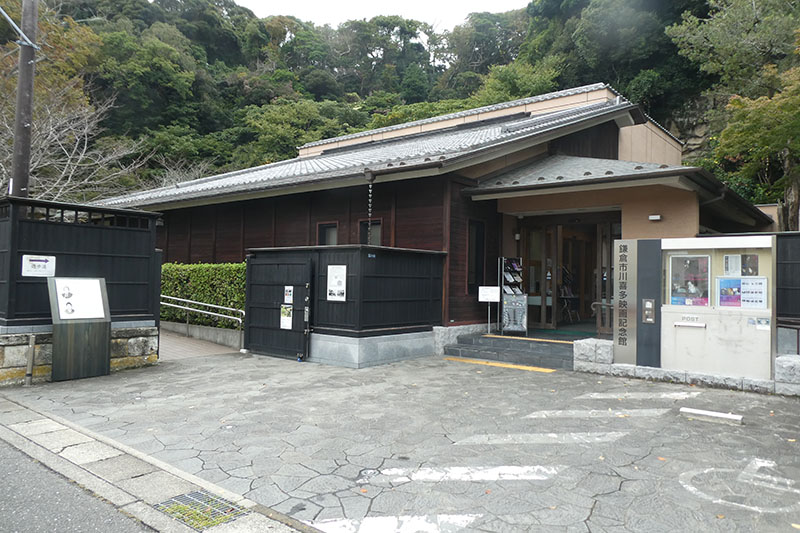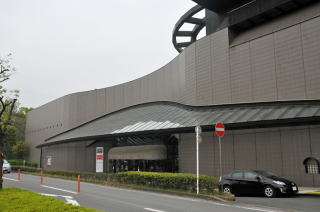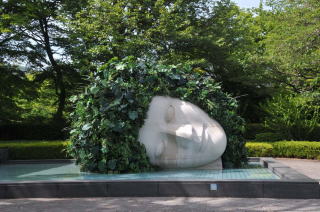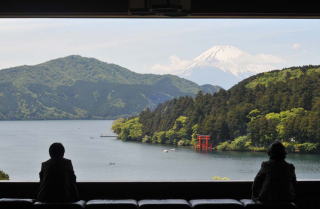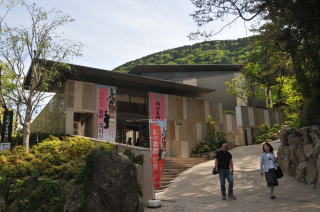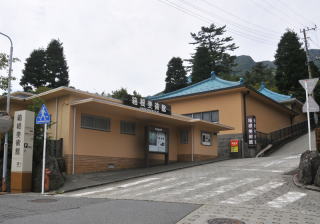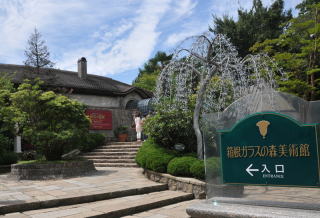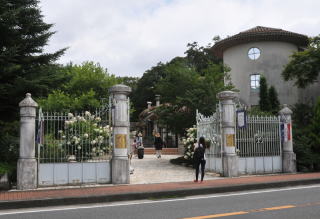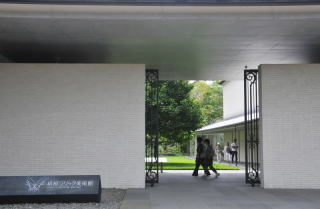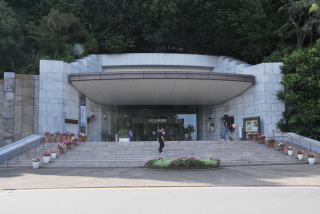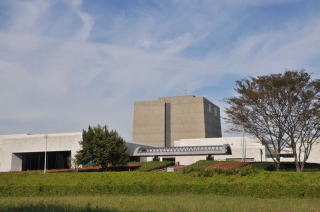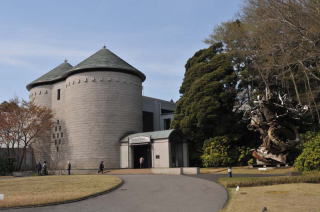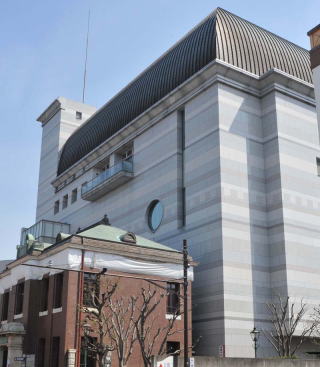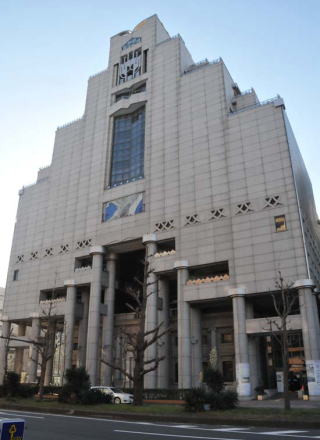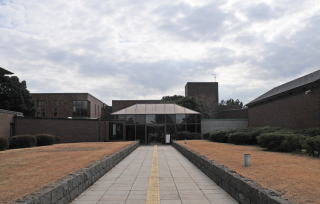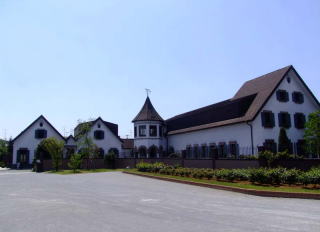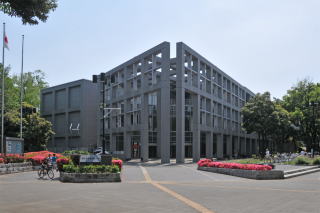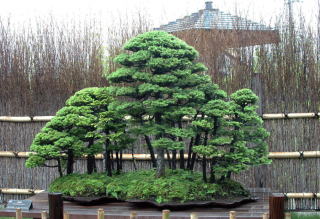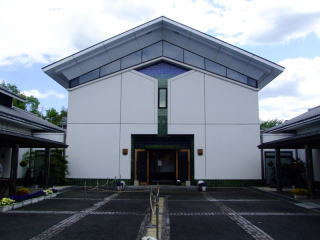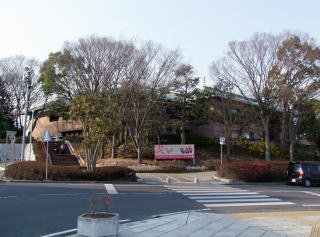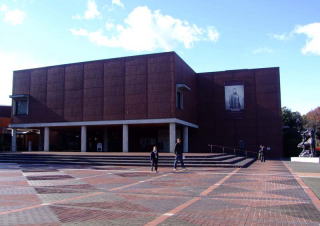| TOKYO NATIONAL MUSEUM Museum is the largest in Japan and collects, houses, and displays a comprehensive collection of art works and antiquities from Japan as well as other Asian countries. It houses about 88,000 items and besides the regular exhibition, the museum holds special exhibitions several times a year. The visitors exceeds one million a year. GENERAL INFORMATION URL: http://www.tnm.jp/?lang=en Address: 13-9 Ueno Koen, Taito-ku Access: Ueno Station on JR Yamanote Line/ Subway Ginza Line/ Subway Hibiya Line Map: http://goo.gl/maps/1gauv Admission: 620 yen (Permanent Exhibition) Time: 9:30 a.m.-5 p.m. (closed Mon- if Monday is a holiday on Tuesday)(Dec. 23, 2024-Jan. 1, 2025 closed) Telephone: 03-3822-1111 JAPANESE GALLERY - HONKAN MAIN HALL
HEISEIKAN The Heiseikan, built to commemorate the crown prince's wedding in 1993, serves primarily as the space for special exhibitions. For this purpose there are four special exhibition galleries on the second floor, as well as the Japanese Archaeology Gallery. 1st Floor: Japanese Archaeology (Chronological Exhibition) The Beginning of Tool Making in the Paleolithic Era at Japanese Archaeology Gallery, Sept. 9-Feb. 1/Permanent Settlements and the Creation of Pottery at Japanese Archaeology Gallery, Sept. 9-Feb. 1/ Interaction with the Asian Continent and the Pottery of an Agricultural Society at Japanese Archaeology Gallery, , Sept. 9-Feb. 1/ Political Maturation and the Creation of Symbols of Authority at Japanese Aarchaeology Gallery, Oct.7-Feb. 1/ The Yamato Kingdom and the Production of Symbols of Authority at Japanese Archaeology Gallery, Oct.7-Feb. 1/ Large Burial Mounds and the Increase in Metal Production at Japanese Aarchaeology Gallery, Oct.7-Feb. 1/ The Rise of Provincial Clans and the Development of a Unique Culture at Japanese Archaeology Gallery, Oct.7-Feb. 1/ Late Burial Mounds and Influence from the Asian Continent at Japanese Archaeology Gallery, Oct.7-Feb. 1/ The Beginning of a State under the Ritsuryo System at Japanese Archaeology Gallery, Sept. 9-Feb. 1/ Mountain Worship and the Belief in the Decline of Buddhism at Japanese Archaeological Gallery, Sept. 9-Feb. 1/ Life and Death in the Kamakura Period at Japanese Archaeological Gallery, Sept. 9-Feb. 1/ Objects Excavated from Edo, at Japanese Archaeological Gallery, Sept. 9-Feb. 1 1st Floor: Japanese Archaeology (Thematic Exhibitions) Important Cultural Property Tomb Sculpture (Haniwa): Dressed up Woman at Japanese Archaeology Gallery, Sept. 30-Feb. 1/Dogu: Objects of Prayer in the Jomon Period at Japanese Archaeology Gallery, Sept. 9-Feb. 1/ Objects of Prayer and Accessories in the Jomon Period at Japanese Archaeology Gallery, Sept. 9-Feb. 1/ Daily Tools of the Jomon Period at Japanese Archaeology Gallery, Sept. 9-Feb. 1/ Daily Tools of the Yayoi Period at Japanese Archaeology Gallery, Sept. 9-Feb. 1Accessories and Tools of the Yayoi Period Used in Rituals at Japanese Archaeology Gallery, Sept. 9-Feb. 1/ Bronze Ritual Implements of the Yayoi Period at Japanese Archaeology Gallery, Sept. 9-Feb. 1/ The Post-Jomon Culture in Hokkaido at Japanese Archaeology Gallery, Sept. 9-Feb. 1/ The Development of Sue Pottery at Japanese Archaeology Gallery, July 8-Feb. 1(2026)/ Ancient Chinese Mirrors from Japanese Kofun Burial Mounds at Japanese Archaeology Gallery, July 8-Feb. 1 (2026)/ Miniature Stone Models Unearthed from Burial Mounds at Japanese Archaeology Gallery, July 8-Feb. 1 (2026)/ Before the the time of Suo Provincial Government Office Hofu City during the Kofun Period at Japanese Archaeology Gallery, July 8-Feb. 1 (2026)/ Copying from Chinese Mirros with TLV Patterns, July 8-Feb. 1 (2026)/ Development of the Production of Beads andJa at Japanese Archaeology Gallery, July 8-Feb. 1 (2026)/ Umanomiya Tumulus No. 4 A Case of key-hole Shaped Tombs Regional Development at 1st Floor Japanese Archaeology Gallery, July 8-Feb. 1 (2026)/ Kofun-Period Culture in the Joso Region: Stone Headrests and Flower-shaped Ornaments at Japanese Archaeology Gallery, July 8-Feb. 1 (2026)/Objects Owned by Ritualistic Leaders at Japanese Archaeology Gallery, July 8-Feb. 1 (2026)/ The Niizawa Senzuka Tombs and Exchange with the Ancient Asian Continent at Japanese Archaeology Gallery, July 8-Feb. 1 (2026)/ Ancient Swords with Inscriptions and the Society of the Kofun-Period at Japanese Archaeology Gallery, July 8-Feb. 1 (2026)/ The Eta Funayama Burial Mound and the Advanced Culture of Provincial Clans at Japanese Archaeology Gallery, July 8-Feb. 1 (2026)/ Development of Figural Haniwa Tomb Figures at Japanese Archaeology Gallery, Sept. 30-Feb. 1/ Important Cultural Property Tomb Sculptures (Haniwa); Dressed-Up Woman at Japanese Archaeology Gallery, Sept. 30-Feb. 1/Ancient Coins at Japanese Archaeology Gallery, Sept. 9-Feb. 1/ Ancient Epitaphs at Japanese Archaeology Gallery, Sept. 9-Feb. 1/ Tiles with Images of Buddhist Deities at Japanese Archaeology Gallery, Sept. 9-Feb. 1/ Development of Haniwa Tomb Figurines at Writing and Government OfficialsinNara Period (710-794) at Japanese Archaeology Gallery, Sept. 9-Feb. 1/ Sutra Mounds: Time Capsules for 5,760,000,000 Years at Japanese Archaeology Gallery, Sept. 9-Feb. 1/ Bronze Mirrors Excavated from Sutra Mounds at Japanese Archaeology Gallery, Sept. 9-Feb. 1/Buddhist Scriptures Buried in Sutra Mounds: Clay Tablets, Stones and Bronze Plates with Sutra Inscriptions at Japanese Archaeology Gallery, Sept. 9-Feb. 1/ Excavated Gold Coins of the Edo Period at Japanese Archaeology Gallery, Sept. 9-Feb. 1/ Roof Tiles with Imperial or Family Crests Castles of Toyotomi Hideyoshi at Japanese Archaeology Gallery, Sept. 9-Feb. 1/ Tomb Sculptures and Funerary Rites at Japanese Archaeology Gallery, Sept. 30-Feb. 1 ASIAN GALLERY - TOYOKAN BUILDING 1st floor Chinese Buddhist Sculpture at Room 1, April 22-April 19 (2026) 2nd floor Oasis2: Education Space: Journey Information at Room 2, April 2-March 31, 2026 Egypt and Western Asia, 2nd floor Room 3, Sept. 9-Dec. 21/ Sculpture from India and Gandhara at Room 3, July 1-Dec. 21/ Art of the Western Regions at Room 3, Sept. 30-Nov. 24 3rd floor The Advent of Chinese Civilization at Room 4, June 17-Nov. 3/ Chinese Bronzes at Room 5, June 3-Oct. 19/ Burials in China at Room 5, June 17-Nov. 3/ Chinese Ceramics at Room 5, Aug. 19-Dec. 7/ Prized Textiles at Room 5, Aug. 5-Nov. 3/ Oasis6: Education Space: Fortune-telling in Asia, 3rd Floor Room 6, April 2-March 31, 2026 4th floor Stone Relief Carvings of China at Room 7, April 22-April 19 (2026) Engraved Calligraphy from Clerical Script to Standard Script at Toyokan Room 8, July 8-Sept. 21/Paintings of the Modern Period at Room 8, July 15-Sept. 21/ Chinese Literati at Room 8, July 8-Sept. 21 5th floor Chinese Lacquerware at Room 9, June 24-Sept. 21/ Decorative Art of the Qing Dynasty at Room 9, June 24-Sept. 21/ Polished Stone Tools and Metal Tools of Korea at Room 10, May 20-Sept. 21/ Korean Ceramics at Room 10, May 27-Sept. 21/ The Rise and Fall of Kings in Korea at Room 10, May 20-Sept. 21/ Korean Ceramics at Room 10, May 27-Sept. 21/ Buddhist Art of Korea at Room 10, April 15-Sept. 21/ Art of the Joseon Dynasty at Room 10, May 20-Sept. 21 Basement Khmer Sculpture at Room 11, April 15-April 19 (2026)/ Gilt Bronze Statues from Southeast Asia at Room 12, Sept. 9-Dec. 21/ Archaeology of India and Southeast Asia at Room 12, May 27-May 31 (2026)/ Southeast Asian Ceramics at Room 12, Sept. 30-Feb. 1/ Asian Textiles: Indian Textiles at Room 13, Aug. 5-Nov. 3/ Ethnic Culture of Asia: The Kris: A Mysterious Weapon from Indonesia at Room 13, June 24-Nov. 16/ Inidan Miniature Paintings at Room 13, Sept. 9-Oct. 13/Ceramics at Room 13, Aug. 5-Oct. 13/ The Advent of Chinese Civilization, June 17-Nov. 3 The Gallery of Horyuji Treasures The Digital Gallery of Horyuji Treasures Interactive exhibition space, July 29-Dec. 21/ 1st Floor: Kanjo-ban (Banner for the Kanjo Ceremoney), Gilt Bronze Buddhist Statues, Halos, Repousse Images, Gigaku Masks Kanjo-ban (Banner for Kanjo ceremony) at Room 1, April 22-April 19 (2026)/ Gilt Bronze Buddhist Stautes, Halos and Repousse Buddshist Images at Room 2, April 22-April 19 (2026)/ Gagaku Masks at Room 3, April 22-April 19 (2026)/ Woodwork, Lacquerware, Incense Woods, and Measuring Instruments at Room 4, Sept. 2-Nov. 24 2nd Floor: Metalwork at Room 5, April 22-April 19 (2026) Painting and Textiles at Room 6,The Gallery of Horyuji Treasures, Sept. 30-Oct. 26 Kuroda Memorial Hall The Kuroda Memorial Hall was built in 1928 through a beuest from Western-style painter Kuroda Seiki (1866-1924). The building first openedthe home of the The Instutute of Arts Research for the Imperial Academy of Fine Arts in 1939. In recognition of Kuroda's artistic achievements, exhibits of Oil paintings, sketches and similar works donated by the artist's family and others are on display. Kuroda Memorial Room: Sept. 30-Dec. 21 Hyokeikan Built in honor of the wedding of the Taisho crown prince, the name of this building means "to express congratulations." It has been designated an Important Cultural Property as a representative example of Western style architecture of the late Meiji operiod (early 20th century). Temporarily Closed |
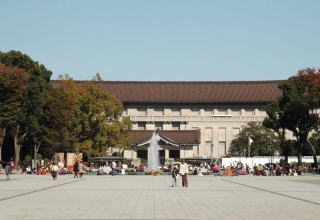 Main Hall (Honkan)  Heiseikan 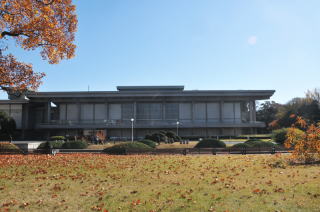 Asian Gallery 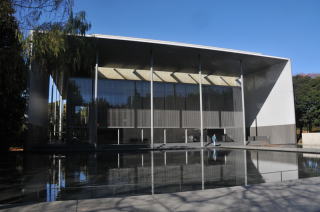 Horyuji Gallery 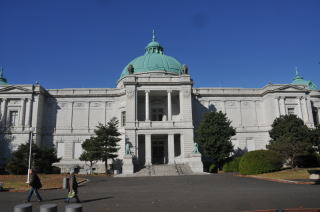 Hyokeikan 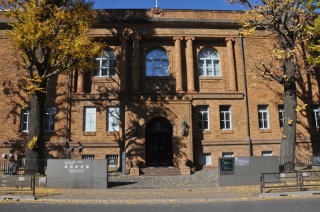 Kuroda Memorial Hall 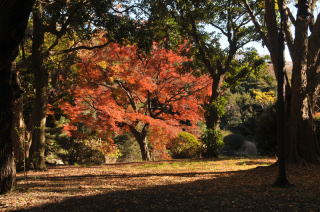 Museum Garden (autumn) 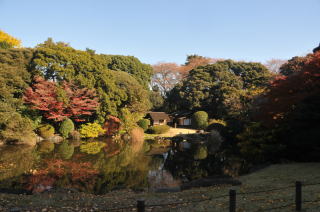 Museum Garden (autumn) 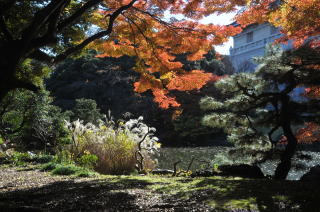 Museum Garden (autumn) 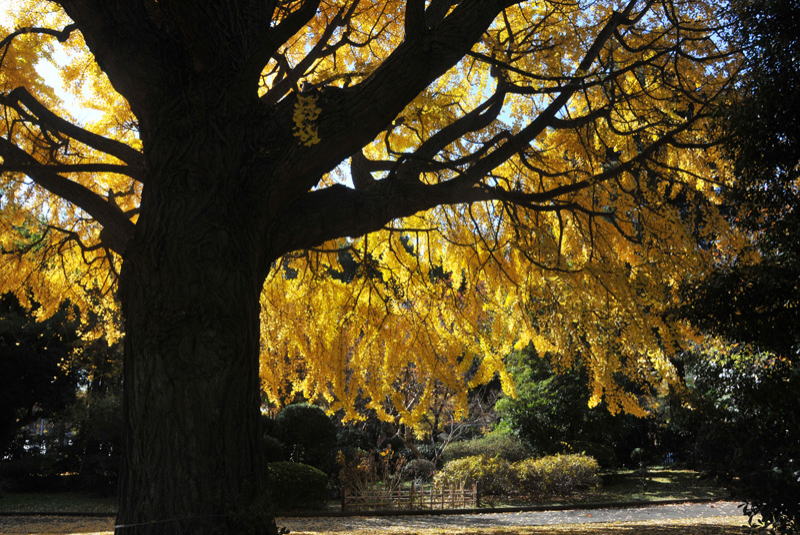 Museum (Gingko Tree) 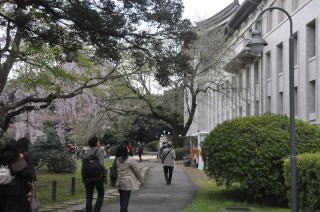 Museum (spring) 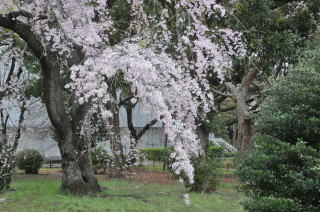 Museum (spring) 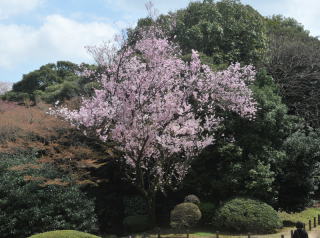 Museum (spring) 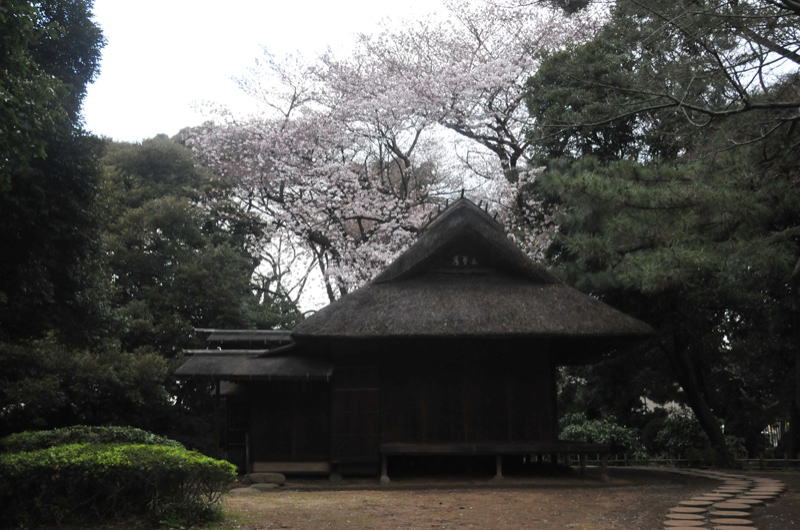 Museum (spring) |
